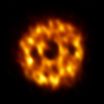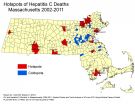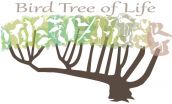(Press-News.org) Astronomers using the Atacama Large Millimeter/submillimeter Array (ALMA) may have detected the dusty hallmarks of an entire family of Pluto-size objects swarming around an adolescent version of our own Sun.
By making detailed observations of the protoplanetary disk surrounding the star known as HD 107146, the astronomers detected an unexpected increase in the concentration of millimeter-size dust grains in the disk's outer reaches. This surprising increase, which begins remarkably far -- about 13 billion kilometers -- from the host star, may be the result of Pluto-size planetesimals stirring up the region, causing smaller objects to collide and blast themselves apart.
Dust in debris disks typically comes from material left over from the formation of planets. Very early in the lifespan of the disk, this dust is continuously replenished by collisions of larger bodies, such as comets and asteroids. In mature solar systems with fully formed planets, comparatively little dust remains. In between these two ages -- when a solar system is in its awkward teenage years -- certain models predict that the concentration of dust would be much denser in the most distant regions of the disk. This is precisely what ALMA has found.
"The dust in HD 107146 reveals this very interesting feature -- it gets thicker in the very distant outer reaches of the star's disk," said Luca Ricci, an astronomer at the Harvard-Smithsonian Center for Astrophysics in Cambridge, Massachusetts, and lead author on a paper accepted for publication in the Astrophysical Journal. At the time of the observations, Ricci was with the California Institute of Technology in Pasadena.
"The surprising aspect is that this is the opposite of what we see in younger primordial disks where the dust is denser near the star. It is possible that we caught this particular debris disk at a stage in which Pluto-size planetesimals are forming right now in the outer disk while other Pluto-size bodies have already formed closer to the star," said Ricci.
According to current computer models, the observation that the density of dust is higher in the outer regions of the disk can only be explained by the presence of recently formed Pluto-size bodies. Their gravity would disturb smaller planetesimals, causing more frequent collisions that generate the dust ALMA sees.
The new ALMA data also hint at another intriguing feature in the outer reaches of the disk: a possible "dip" or depression in the dust about 1.2 billion kilometer wide, beginning approximately 2.5 times the distance of the Sun to Neptune from the central star. Though only suggested in these preliminary observations, this depression could be a gap in the disk, which would be indicative of an Earth-mass planet sweeping the area clear of debris. Such a feature would have important implications for the possible planet-like inhabitants of this disk and may suggest that Earth-size planets could form in an entirely new range of orbits than have ever been seen before.
The star HD 107146 is of particular interest to astronomers because it is in many ways a younger version of our own Sun. It also represents a period of transition from a solar system's early life to its more mature, final stages where planets have finished forming and have settled into their billions-of-years-long orbits around their host star.
"This system offers us the chance to study an intriguing time around a young, Sun-like star," said ALMA Deputy Director and coauthor Stuartt Corder. "We are possibly looking back in time here, back to when the Sun was about 2 percent of its current age."
The star HD 107146 is located approximately 90 light-years from Earth in the direction of the constellation Coma Berenices. It is approximately 100 million years old. Further observations with ALMA's new long baseline, high resolution capabilities will shed more light on the dynamics and composition of this intriguing object.
INFORMATION:
Additional authors on the paper include John M. Carpenter and B. Fu, Caltech; A. M. Hughes, Wesleyan University; and Andrea Isella, Rice University.
The National Radio Astronomy Observatory is a facility of the National Science Foundation, operated under cooperative agreement by Associated Universities, Inc.
The Atacama Large Millimeter/submillimeter Array (ALMA), an international astronomy facility, is a partnership of Europe, North America and East Asia in cooperation with the Republic of Chile. ALMA is funded in Europe by the European Organization for Astronomical Research in the Southern Hemisphere (ESO), in North America by the U.S. National Science Foundation (NSF) in cooperation with the National Research Council of Canada (NRC) and the National Science Council of Taiwan (NSC) and in East Asia by the National Institutes of Natural Sciences (NINS) of Japan in cooperation with the Academia Sinica (AS) in Taiwan and the Korea Astronomy and Space Science Institute (KASI).
ALMA construction and operations are led on behalf of Europe by ESO, on behalf of North America by the National Radio Astronomy Observatory (NRAO), which is managed by Associated Universities, Inc. (AUI) and on behalf of East Asia by the National Astronomical Observatory of Japan (NAOJ). The Joint ALMA Observatory (JAO) provides the unified leadership and management of the construction, commissioning and operation of ALMA.
COLUMBUS, Ohio - If dieting is on your New Year agenda, it might pay to be mindful of a study suggesting there is little hard evidence that mindfulness leads to weight loss.
Ohio State University researchers reviewed 19 previous studies on the effectiveness of mindfulness-based programs for weight loss. Thirteen of the studies documented weight loss among participants who practiced mindfulness, but all lacked either a measure of the change in mindfulness or a statistical analysis of the relationship between being mindful and dropping pounds. In many cases, the studies ...
BOSTON (December 11, 2014) -- A new study from epidemiologists at Tufts University School of Medicine helps to identify communities with the greatest public health need in Massachusetts for resources relating to HIV/AIDS and hepatitis C. The study, published today in PLOS ONE, used geospatial techniques to identify hotspots for deaths related to HIV/AIDS and hepatitis C. The findings show large disparities in death rates exist across race and ethnicity in Massachusetts.
The HIV/AIDS and hepatitis C epidemics are challenging public health officials and clinicians in the ...
BALTIMORE, December 11, 2014 - Insilico Medicine along with scientists from Vision Genomics and Howard University shed light on AMD disease, introducing the opportunity for eventual diagnostic and treatment options.
The scientific collaboration between Vision Genomics, Inc., Howard University, and Insilico Medicine, Inc., has revealed encouraging insight on the AMD disease using an interactome analysis approach. Resources such as publicly available gene expression data, Insilico Medicine's original algorithm OncoFinderTM, and AMD MedicineTM from Vision Genomics allowed ...
How much protection the annual flu shot provides depends on how well the vaccine (which is designed based on a "best guess" for next season's flu strain) matches the actually circulating virus. However, it also depends on the strength of the immune response elicited by the vaccine. A study published on December 11th in PLOS Pathogens reports that genetic variants in a gene called IL-28B influence influenza vaccine responses.
Adrian Egli, from the University of Basel, Switzerland, and colleagues started with blood samples from organ transplant patients. Such patients are ...
New circulating metabolites might allow early diagnosis of cardiovascular disease. A team of scientists from Uppsala University, Karolinska Institutet and Colorado State University have identified novel lipid-derived molecules associated with future coronary heart disease events. The study published in the journal PLOS Genetics has examined the metabolic profile of blood samples from more than 3,600 individuals that have been followed-up for up to 10 years.
Professor Erik Ingelsson and graduate student Andrea Ganna have used novel biochemical and bioinformatics approaches ...
CHAMPAIGN, Ill. -- An international effort involving more than 100 researchers, nine supercomputers and about 400 years of CPU time has yielded the most reliable avian tree of life yet produced, researchers report in the journal Science. The tree reflects the evolutionary relationships of 48 species of birds.
The paper describing the bird family tree is one of eight articles on avian evolution published together in Science. The overall endeavor was coordinated by Erich Jarvis of Duke University; M. Thomas P. Gilbert of the Natural History Museum of Denmark; and Guojie ...
Crocodiles are the closest living relatives of the birds, sharing a common ancestor that lived around 240 million years ago and also gave rise to the dinosaurs. A new study of crocodilian genomes led by scientists at UC Santa Cruz reveals an exceptionally slow rate of genome evolution in the crocodilians (a group that includes crocodiles, caimans, alligators, and gharials).
The UC Santa Cruz team used the crocodilian genomes, combined with newly published bird genomes, to reconstruct a partial genome of the common ancestor of crocodiles, birds, and dinosaurs. The study, ...
Conventional wisdom holds that changing the views of voters on divisive issues is difficult if not impossible -- and that when change does occur, it is almost always temporary.
But Michael LaCour, a UCLA doctoral candidate in political science, and Donald Green, a Columbia University political science professor, have demonstrated that a single conversation can go a long way toward building lasting support for a controversial social issue. In addition -- nearly as surprisingly -- the effect tends to spill over to friends and family members.
The key is putting voters ...
A new computational technique developed at The University of Texas at Austin has enabled an international consortium to produce an avian tree of life that points to the origins of various bird species. A graduate student at the university is a leading author on papers describing the new technique and sharing the consortium's findings about bird evolution in the journal Science.
The results of the four-year effort -- which relied in part on supercomputers at the university's Texas Advanced Computing Center (TACC) -- shed light on the timing of a "big bang" in bird evolution, ...
RIVERSIDE, Calif. - The absence of teeth or "edentulism" has evolved on multiple occasions within vertebrates including birds, turtles, and a few groups of mammals such as anteaters, baleen whales and pangolins. Where early birds are concerned, the fossil record is fragmentary. A question that has intrigued biologists is: Based on this fossil record, were teeth lost in the common ancestor of all living birds or convergently in two or more independent lineages of birds?
A research team led by biologists at the University of California, Riverside and Montclair State University, ...




